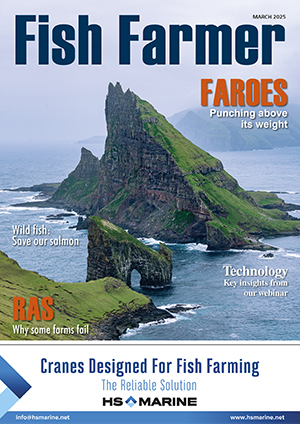Consortium aims to help lobster survival rates
An innovation group involving the university sector and development bodies is helping to find ways to ensure that more lobsters survive their early stage growth phase.
Marine-i is helping the National Lobster Hatchery to develop a new kind of larval rearing vessel, which can be used to improve lobster survival in the hatchery and ultimately help support lobster stocks.
The National Lobster Hatchery is a marine conservation, research and education charity based in Padstow, Cornwall, UK. Its work is specifically related to a commercial species – the European lobster. A vital element of the Hatchery’s work focuses on the larval stage of the lobster lifecycle. In the wild, the survival rate at the larval stage is very low. The National Lobster Hatchery seeks to improve survival at this early, vulnerable stage of the lobster’s life and release them back into the wild at an age where they are less vulnerable and more able to fend for themselves.
A female lobster can carry in the region of 20,000 eggs under their abdomen. However, only one of these is expected to survive in the wild. With skilful and careful application of modern technology, the National Lobster Hatchery can improve this survival rate by about 1,000 times.
Marine-i was set up to help the marine technology sector in Cornwall and the Isles of Scilly grow through research and innovation. With support from the European Regional Development Fund, Marine-i is a collaboration between the Universities of Exeter and Plymouth, The Cornwall College Group, Cornwall Marine Network, Cornwall Development Company and the Offshore Renewable Energy Catapult.
Dr Carly Daniels of the National Lobster Hatchery said: “We currently use modified conical vessels to keep the larvae in suspension. Now, based on our own preliminary work, we believe that it may be possible to create an enhanced larval vessel with conditions that enable greater survival rates “
Marine-i is working with National Lobster Hatchery to develop an innovative prototype for testing. Ruadan Geraghty from Marine-i partner University of Plymouth, said: “We are carrying out exhaustive research into the best materials to deliver the ultimate aim of improved lobster larval survival. We are aiming for materials to be sustainable and recyclable, as well as sufficiently robust to withstand the rigors of the marine environment.”
The National Lobster Hatchery will test the prototype in the hatchery from the start of the new larval season in May 2022, with the help of Marine-i partner, the University of Exeter.
Dr Daniels added: “If the new larval vessel is proven to achieve higher survival rates than the vessels we currently use, then we will look to move to large scale production of the new vessels for future use. This would be a very exciting outcome. The National Lobster Hatchery is one of only very few organisations worldwide which is investigating how innovative improvements can be made in this area.”
Farm Technician (Torridon) - Mowi Scotland
Torridon£27,236 to £30,504 per annum
Farm Technician (Rum) - Mowi Scotland
Small Isles£27,236 to £30,504 per annum
Deeckhand (Lochlannach) - Mowi Scotland
Skye & Lochalsh£27,236 to £30,504 per annum
Marine Operative - Bakkafrost Scotland Limited
IV54 8XH£25,501.14 to £34,472.50 per annum
Temporary Harvest Technician (Nightshift) - Mowi Scotland
LochaberFrom £30,504 per annum
